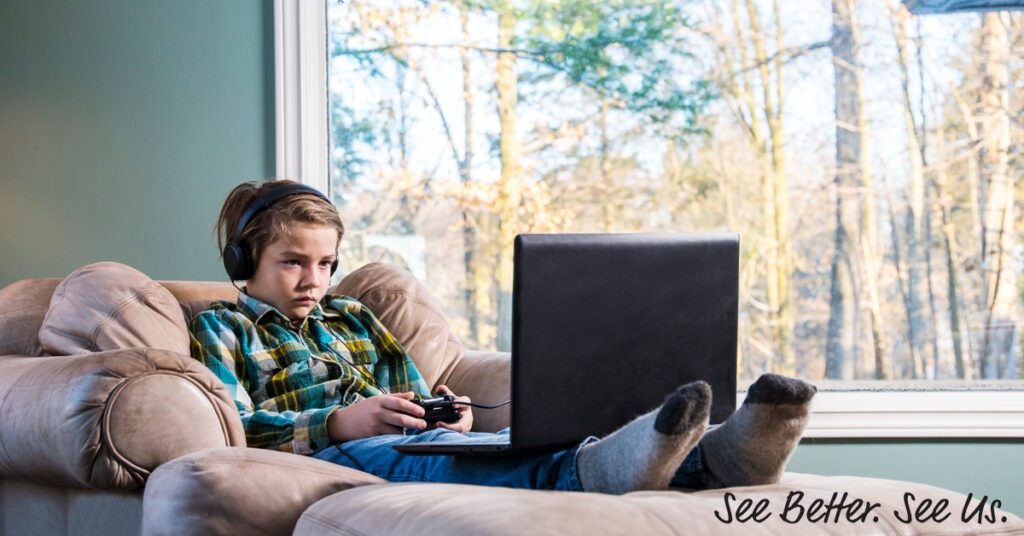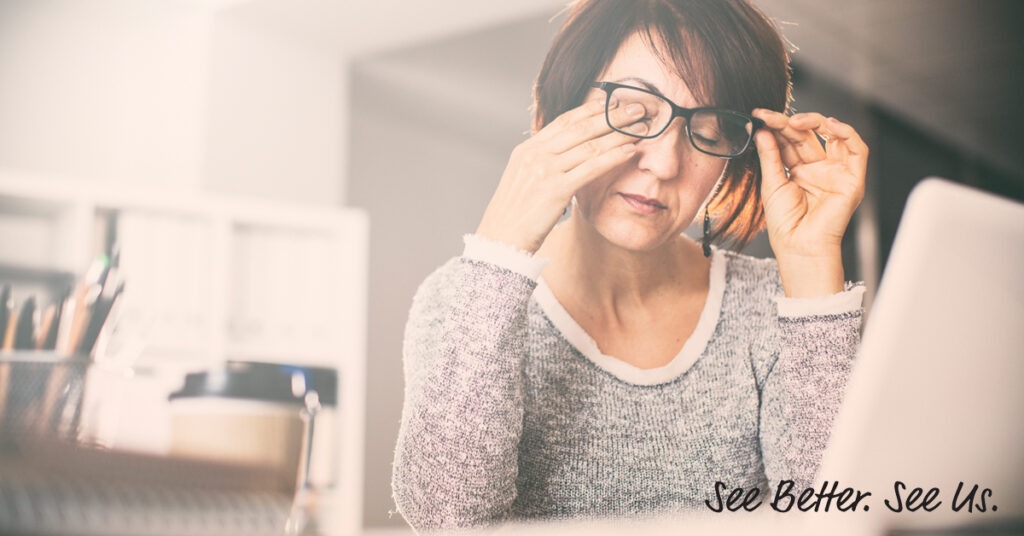What you need to know about digital eye strain

Australians are leading world consumers of tablets, smartphones and computers, with 80% now owning and using a smartphone. Collectively, we look at our smartphones more than 440 million times a day and 75% of us regularly engage in multi-tasking across multiple screens and devices.
Digital has become an inseparable part of everything we do. It has changed the way we work, learn, shop, socialise and relax; however, our eyes are not accustomed to the changes of the modern life and it is causing a real strain on many of us. The proliferation of devices and growing usage rates creates the question; how will our vision adapt?
In response, Beckenham Optometrist is launching a local campaign to create awareness in the community that Digital Eye Strain can be at the root of strained eyes, neck and shoulder pain as well as headaches – and that there are simple solutions to ease the strain.
Digital Eye Strain is the physical eye discomfort felt by as many as 65% of individuals after two or more hours in front of a digital screen. Those using two or more devices simultaneously are at higher risk.
WHAT ARE THE SYMPTOMS OF DIGITAL EYE STRAIN?
- Neck, shoulder and back pain
- Eye Strain
- Headaches
- Blurred Vision
- Dry Eyes
WHY DOES DIGITAL EYE STRAIN OCCUR?
- Our eyes are focusing more intensively, switching frequently between devices and adjusting to increasingly smaller, pixelated and glowing screens
- Digital devices are backlit and emit blue-violet light that can cause strain and discomfort and is linked to disrupted sleeping patterns
- The normal blinking rate is often reduced from 17 or more blinks a minute to 8-10 blinks, reducing tear production, making your eyes feel dry and uncomfortable
- Our posture has changed as we lean toward our screens and/or slouch in our chairs, putting a strain on the neck and back.

HOW TO REDUCE EYE STRAIN?
1. Exercise your eyes.
- Your eyes are like any other muscle, they need exercise. Make sure you are taking breaks from your screen every 20 minutes and give your eyes a break and a routine. Moving your eyes around, looking at varying objects both distant and close, closing and massaging your eyes, and repeating this five to 10 times can give your eyes the exercise and break they need from intense screen light. This simple yet effect step only takes 2 minutes and considerably helps in reducing eye strain and related symptoms.
2. Adjust your eyes and your settings.
- Explore settings on your digital devices and try different font sizes, screen contrasts and brightness, until you find a balance that is easy on you and your eyes. Most technologies now feature a low screen mode that helps in reducing Blue Light by emitting a yellow light.
3. Take your eyes on a walk.
- Exposing your eyes, mind and body to daylight will help give your eyes a break from the screen, natural light helps your sleep cycle and improve your mood and alertness. Make sure to wear sunglasses from protection from glare and natural blue light caused by sunshine.
4. Invest in taking care of your eyes
- If you are spending long periods of time on the computer and are finding you suffer from eye strain, make sure to book an appointment with one of our optometrists so we can help you find an appropriate solution including the use of blue light blockers, likewise a great pair of sunglasses are essential in protecting our eyes from harmful lights!
As part of the “Digital Eye Strain” campaign Beckenham Optometrist is urging people, regardless of whether they currently wear glasses, to take the time and recognise whether they have Digital Eye Strain symptoms. Understanding the impact of digital device usage on an individual’s eyes is one aspect that Optometrists, will discuss with you as part of the practice’s thorough 360° comprehensive eye consultation.







